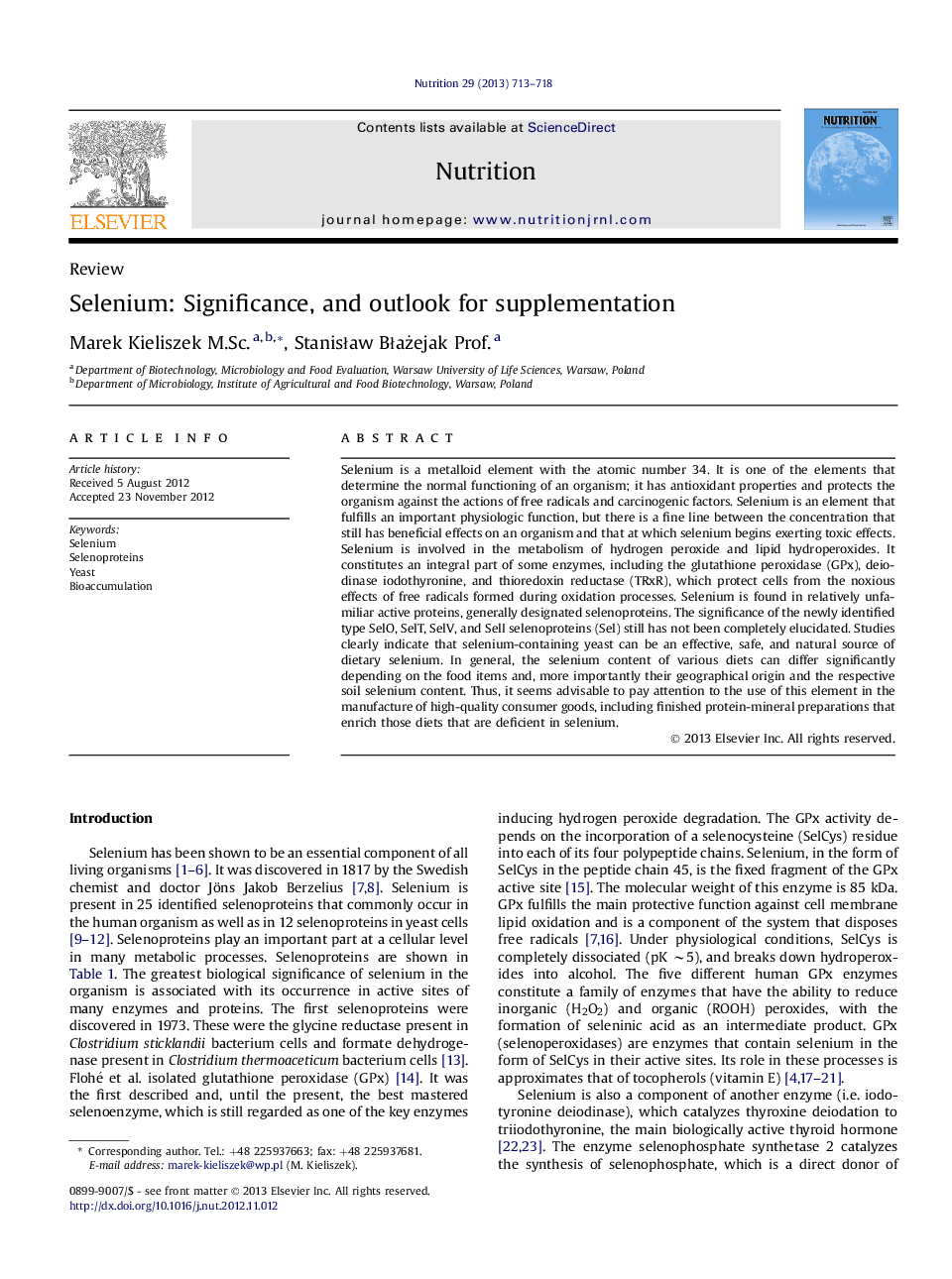| Article ID | Journal | Published Year | Pages | File Type |
|---|---|---|---|---|
| 6090182 | Nutrition | 2013 | 6 Pages |
Selenium is a metalloid element with the atomic number 34. It is one of the elements that determine the normal functioning of an organism; it has antioxidant properties and protects the organism against the actions of free radicals and carcinogenic factors. Selenium is an element that fulfills an important physiologic function, but there is a fine line between the concentration that still has beneficial effects on an organism and that at which selenium begins exerting toxic effects. Selenium is involved in the metabolism of hydrogen peroxide and lipid hydroperoxides. It constitutes an integral part of some enzymes, including the glutathione peroxidase (GPx), deiodinase iodothyronine, and thioredoxin reductase (TRxR), which protect cells from the noxious effects of free radicals formed during oxidation processes. Selenium is found in relatively unfamiliar active proteins, generally designated selenoproteins. The significance of the newly identified type SelO, SelT, SelV, and SelI selenoproteins (Sel) still has not been completely elucidated. Studies clearly indicate that selenium-containing yeast can be an effective, safe, and natural source of dietary selenium. In general, the selenium content of various diets can differ significantly depending on the food items and, more importantly their geographical origin and the respective soil selenium content. Thus, it seems advisable to pay attention to the use of this element in the manufacture of high-quality consumer goods, including finished protein-mineral preparations that enrich those diets that are deficient in selenium.
